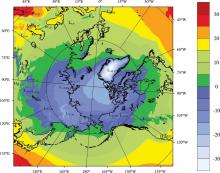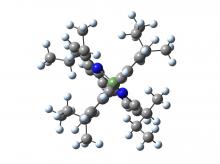Energy/Chemical
While at DuPont Chemical Company, Charles Kettering, from Loudonville, was responsible for Freon, used in refrigeration and air conditioning systems. Roy J. Plunkett, from New Carlisle, discovered Teflon in 1938. Today, along with DuPont, many companies along the energy supply chain have made their homes in the Buckeye State.
Particulate Dispersion
For generations, farmers have applied biosolids to their fields to improve soil fertility, leading scientists to examine its effects on human health. A University of Toledo research team led by Ashok Kumar, Ph.D., has leveraged resources at the Ohio Supercomputer Center to study air quality issues such as these in outdoor and indoor environments.
Optimized Fluidic Control
The roar of jet engines is the major source of noise created by commercial and military aircraft, which are bound by numerous stringent noise regulations. A research team led by Ephraim Gutmark, Ph.D., D.Sc., at the University of Cincinnati, is leveraging both experimental and computational tools to optimize existing aircraft noise suppression techniques and to develop new ones.
Animal Movement
Animals are in constant movement across the surface of the earth, and climate affects their movements, especially for migrating and flying animals. Understanding animal movement is pivotal to predicting and ensuring the survival of populations in the face of rapid global changes to climate, land-use and habitats.
Electrical Double Layers
Many biological molecules and common surfaces carry an electrical charge. For example, DNA has a strong negative charge, and so does an amorphous form of silicon dioxide known as silica, the material most people recognize as “glass.” A charged molecule or surface, along with the electrically compensating layer of ions in the adjacent solution, is known as the electrical double layer (EDL).
Liquid Crystal Elastomers
The emerging field of soft robotics requires mechanical components that grasp objects with the same delicacy as human hands. At present, most soft robots are powered by hard, sometimes bulky, actuators such as a servo motor, air compressor or hydraulic pump. However a new class of polymers, called “liquid crystal elastomers,” may eventually find use as soft artificial muscles.







